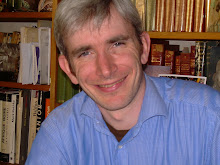We are here there to examine a proposal to change the name of our country. The idea was brought up recently at the UN by a number of countries that had gone through much the same sort of post-colonial experience as our own, but I doubt that anything will actually come of it. I’m not even sure that it’s really desirable to do so (more about this some other day)
The professors’ presence on this occasion was a fortunate coincidence, since it allowed pass on an interesting question I received today from Lady Singleton (click below).
In brief, the lady would like to know just where she she can find Gondwana on the map.
I’m so glad you asked that question, dear Lady Singleton, and here’s what our encyclopaedic professors have to say about the subject (after consultation with a few of their collaborators).
There’s been a tremendous amount of speculation and controversy about this very question through the millenia and references to the country are found in a number of works of great antiquity - which shows that the ancient world was entirely aware of its existence.

Further and more oblique references are encountered in Aristotle’s treatise on Memory, in the Dialogues of Plato (passim), in several of the manuscripts of the Revelations of Hermes Trismegistus (see Festugières’ definitive work on this subject), as well as in the works of Giordano Bruno and others (including, most recently, Hölderlin).
What we call Gondwana today was referred to in Antiquity as the Third Hemisphere (Tertium Hemisphaerium). This has been taken quite literally at times, as can be seen in the above diagram, but a recent archeological discovery opens some new and intriguing perspectives.
***
This brooch or fibula (actual size) was discovered in a 1st millennium BC tomb site outside Levana. Thanks to Michel Mauraisin, director of excavation at the site for allowing us to use this picture.
Many experts today believe that the silver brooch in the shape of a Moebius Loop (above), dating from the first millennium BC and only recently discovered in one of the royal Barrows outside Levana, illustrates the surprising direction taken by the topological speculation of the country’s earliest cosmographers.
Our colleagues at the department of Psychology at our university point out that this loop or strip offers a helpful topological representation of the way the imagination interacts with practical experience.
They point out that in such a strip, a single continuous surface may connect two distinct points initially inscribed on opposite sides of the sheet of paper – before it was twisted into professor Moebius’ paradoxical shape. The full implications of this remain to be explored.
(Any one interested in the Moebius Strip can look it up by using this link http://en.wikipedia.org/wiki/M%C3%B6bius_strip).
This leads to a further important comment: the region referred to as the Third Hemisphere in the Western world, was known to 12th century Arab geographers as the Eighth Climate. According to a number of earlier thinkers the Third Hemisphere or Eighth Climate stand in direct continuity with the two other hemispheres and climates, but on the other side of the page, so to speak – hence the need for the idiosyncratic loop as a topological model. Persian geographers, too, as early as the 12th century, were calling Gondwana Na-Koja-Abad – the Nowhere Place, from which, they held, all knowledge flows.
New developments in satellite photography have allowed geographers and cosmographers to make great progress in the elaboration of a coherent scientific model. We propose to go into this tomorrow or the next day, providing the FM is willing.
Of course I'm willing, dear Herbert and Wilhelmina, you know the subject far better than I do!



No comments:
Post a Comment